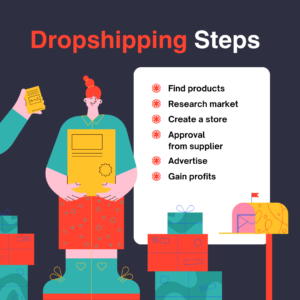
How to make money online on social media with a small following? This is the question which stays in everyone’s minds.
According to my research, Here are some passive income ideas, though it’s important to note that some level of initial effort and maintenance may be required for many of these.
My first and most important suggestion is don’t be in a rush, never expect to make money quickly especially when you start an online business. Certainly, online work could be slow but if it’s steady, it can achieve the milestones. However, you just need to choose the right direction.
1: Create and Sell an Online Course or eBook:

If you have expertise in a particular area, create digital products like online courses or eBooks. For Example, If you are good at web development, Create a comprehensive course on web development, covering HTML, CSS, JavaScript, and popular frameworks.
or if you are good food section you can offer a course on preparing Healthy Cooking on a Budget, nutritious meals on a budget, including meal planning and shopping tips.
And you can sell them on Platforms like Udemy and Amazon Kindle, which allow you to sell your content.
2: Stock Photography:

If you’re a photographer, you can upload your photos to stock photo websites and earn royalties whenever someone purchases them.
Stock photography involves the licensing of images for use in various media, such as websites, advertisements, publications, and more. Photographers contribute their work to stock photo agencies, where businesses, designers, or individuals can purchase licenses to use these images for their projects.
Ensure your photographs are of high quality, well-composed, and properly exposed. Stock agencies typically have strict quality standards.
Explore different stock photo agencies such as Shutterstock, Adobe Stock, Getty Images, and others. Understand their submission process, commission rates, and licensing terms.
3: Automated Dropshipping:

Start an e-commerce store using a dropshipping model. With drop shipping, you sell products, but the supplier handles inventory and shipping.
Dropshipping is a retail fulfilment method where a store doesn’t keep the products it sells in stock. Instead, when you sell a product, you purchase the item from a third party (usually a wholesaler or manufacturer) and have it shipped directly to the customer. This business model has gained popularity due to its low upfront costs and the ability to start an e-commerce business with minimal risk. you just need to little research and need to check the demand and competition.
Choose an e-commerce platform like Shopify, WooCommerce, or Magento to set up your online store. Customize the design and layout to reflect your brand.
4: License Your Photography or Artwork:
If you’re a creative professional, like a graphic designer or photographer, license your work for use in advertisements, merchandise, or other media.
5: Create an App:
If you have programming skills, create a mobile app that can generate income through ads, in-app purchases, or premium versions.
6: Affiliate Marketing:
Promote other people’s products and earn a commission for every sale made through your unique affiliate link.
7: Create a Blog or website:
Build a blog or website around a niche you are passionate about. Once you have enough content and followers, you can earn money through advertising, sponsorships, and affiliate marketing.

Start a website or blog on a topic you are passionate about or have expertise in.
- Quality Content:
Publish high-quality and original content regularly. This will attract and retain visitors.
- AdSense Eligibility:
Ensure your website complies with Google AdSense policies. You must have valuable content, a good user experience, and adhere to Google’s program policies.
- Apply for AdSense:
Sign up for a Google AdSense account. Fill out the application form and submit your website for review.
- Ad Placement:
Once approved, place AdSense ad units strategically on your website. Common placements include the header, sidebar, and within the content.
- Optimize Ad Placement:
Experiment with different ad sizes and formats to find the best-performing placements. Ensure that ads are placed where they can be seen without being intrusive.
- Comply with Policies:
Adhere to Google AdSense policies to maintain compliance. Violating policies can lead to account suspension.
- Track Performance:
Use the AdSense dashboard to monitor your earnings, view reports, and gain insights into ad performance.
8: Facebook Pages and Groups:

-
Create a Facebook Page:
Build a page around a niche or topic you are passionate about. Grow your audience by posting engaging content and interacting with your followers. Once you have a substantial following, you can monetize through sponsored posts, affiliate marketing, and selling products or services.
-
Facebook Groups:
Similar to pages, you can create or join Facebook groups related to your interests. Engage with group members and offer valuable content. Some groups allow promotional posts or partnerships, providing opportunities for income.
-
Affiliate Marketing:
Share affiliate links on your Facebook Page or in relevant groups. When your followers make a purchase through these links, you earn a commission.
-
Sell Products or Services:
Set up a Facebook Shop: If you have physical or digital products, you can create a Facebook Shop to sell directly to your audience.
Services: Advertise and sell your services through your Facebook Page. This could include consulting, coaching, freelance work, and more.
-
Facebook Ads:
If you have a business or a product, you can use Facebook Ads to reach a broader audience. Create targeted ads to promote your products or services.
-
Facebook Live:
Use Facebook Live to connect with your audience in real time. You can host Q&A sessions, product demonstrations, or webinars. Viewers can send you Facebook Stars, a form of virtual currency that can be converted into cash.
-
Content Creation:
Create engaging content such as videos, articles, or graphics. As your content gains traction, you may qualify for Facebook’s Partner Program, where you can earn money from ad revenue.
-
Instant Articles:
If you have a blog or website, consider using Facebook Instant Articles. This feature also allows you to monetise your articles through Facebook Audience Network ads.
-
Facebook Marketplace:
Sell physical goods through Facebook Marketplace. This can be especially effective for local transactions.
-
Sponsorships and Brand Collaborations:
As your audience grows, brands may be interested in sponsoring your content or collaborating with you for promotions.
Remember to comply with Facebook’s policies and guidelines when implementing these strategies. Additionally, building a genuine and engaged audience takes time, so be patient and consistently provide value to your followers. Always disclose any sponsored content or affiliate links to maintain transparency with your audience.
9: Youtube channel:
For YouTube:
-
Create a YouTube Channel:
Start a YouTube channel focused on a niche or topic that interests you.
-
Quality Content:
Upload high-quality, engaging videos consistently. Build a loyal audience.
-
AdSense Eligibility:
Ensure your YouTube channel complies with AdSense policies, including community guidelines and terms of service.
-
Apply for AdSense:
Connect your YouTube account to AdSense. Apply for monetization through your YouTube Studio. You need at least 1,000 subscribers and 4,000 watch hours in the past 12 months to be eligible.
-
Ad Placement:
Monetize your videos by enabling ads. You can choose ad formats, such as skippable video ads, non-skippable video ads, and display ads.
-
Optimize Ad Placement:
Experiment with the placement of ads within your videos. Consider viewer experience while maximizing revenue.
-
Comply with Policies:
Adhere to YouTube’s policies to maintain your AdSense monetization. Violating guidelines can lead to demonetization or account termination.
-
Track Performance:
Use YouTube Analytics to track your video performance, audience engagement, and ad revenue.
Making money through YouTube is possible through various strategies.
Here are some common ways to monetise your YouTube channel:
-
Enable AdSense:
Once your channel meets the eligibility requirements, you can apply for the YouTube Partner Program and enable AdSense. You’ll earn money from ads displayed on your videos.
-
Affiliate Marketing:
Promote affiliate products in your video descriptions. When viewers click on your affiliate links and make a purchase, you earn a commission.
-
Sponsorships:
Work with brands for sponsored content. Companies may pay you to create videos featuring their products or services.
-
Channel Memberships:
Enable channel memberships for your audience. Viewers can pay a monthly fee to become members and receive perks like exclusive content, badges, and emojis.
-
Merchandise Shelf:
If you have merchandise such as T-shirts, mugs, or other products, use the Merchandise Shelf feature to showcase and sell items directly on your channel.
-
Super Chat and Super Stickers:
Enable Super Chat and Super Stickers during live streams. Viewers can purchase these to highlight their messages or show support during your live broadcasts.
-
YouTube Premium Revenue:
YouTube Premium subscribers pay a monthly fee for an ad-free experience. You earn a share of the revenue based on the watch time of your content by Premium subscribers.
-
Crowdfunding:
Platforms like Patreon or Ko-fi allow your viewers to support you financially on a recurring basis. In return, you can offer exclusive content, behind-the-scenes access, or other perks.
-
YouTube Shorts Fund:
If you create engaging and popular short-form content on YouTube Shorts, you may be eligible to receive a share of the YouTube Shorts Fund.
-
License Your Content:
License your videos to media outlets, advertisers, or other platforms. This can provide an additional stream of income.
-
YouTube Ad Breaks:
If your videos meet the eligibility criteria, you can use YouTube Ad Breaks to insert short ads during your videos and earn revenue based on ad impressions.
-
Webinars and Online Courses:
Promote and sell webinars or online courses related to your content. You can direct viewers to external platforms for course purchases.
-
Consulting or Coaching:
If you have expertise in a particular field, offer consulting or coaching services. You can promote these services through your videos.
Remember that a successful YouTube channel takes time and consistency. Focus on creating high-quality, engaging content that resonates with your target audience.






